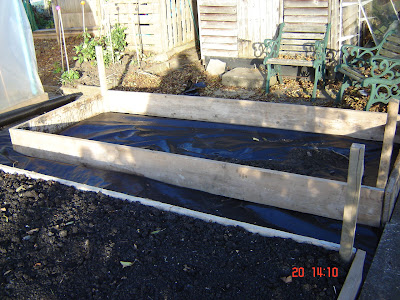

Now that the gladioli and dahlias are either lifted or in their new positions, the end raised bed could be built. They are 4' wide and about 9' long and are built over good membrane to prevent any weeds groweing up through the bed. It will be filled with my usual blend of leaf mould, allotment compost and 12 year old manure which has a consistency of bought compost but with the added benefit of it holding onto moisture very well indeed.
One more to go but for that I need to have finished eating the bed of parsnips in the way.































